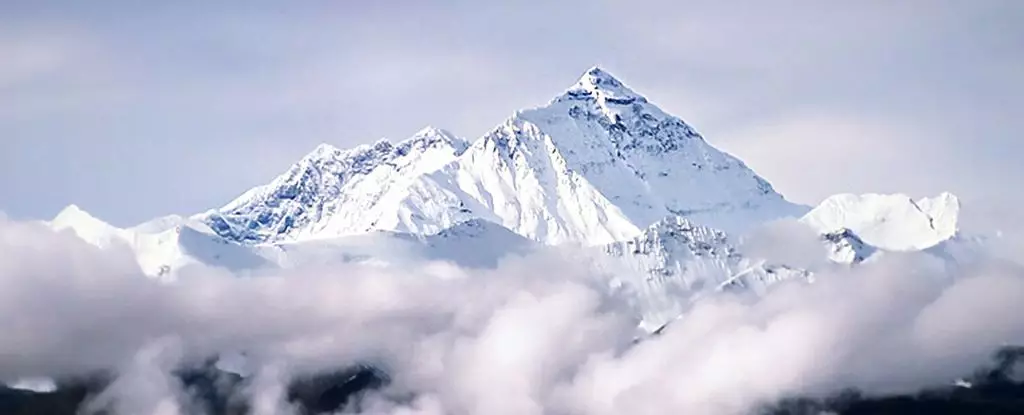Mount Everest, towering at an impressive 8,849 meters (29,032 feet), is widely recognized as the tallest mountain on Earth. While many attribute its grandeur to the relentless forces of tectonic activity that have shaped the Himalayas over millions of years, a recent study proposes a fresh perspective: the concept of geological ‘piracy’. This novel insight sheds light on why Everest stands so distinctively apart from its Himalayan neighbors, primarily through the remarkable effects of shifting river systems in the region.
Traditionally, the height of mountains has been understood through the mechanics of tectonics, where colliding continental plates force the Earth’s crust upward. It generally follows that mountains formed through similar geological processes should exhibit comparable elevations. However, the uniformity observed among most peaks in the Himalayas, with their heights often differing by no more than 100 meters, amplifies Everest’s mystery. Standing a whopping 250 meters taller than other surrounding peaks, its elevated stature prompts a closer examination of the underlying geological dynamics at play.
Emerging from research conducted by scientists from the China University of Geosciences and University College London, a comprehensive model suggests that apart from the known tectonic forces, the phenomenon of river drainage piracy might have significantly influenced Everest’s rise. Rivers are dynamic entities that shape the landscape both through erosion and by the flow of sediment. The concept of ‘piracy’ in this context refers to the process by which one river captures another’s flow, altering sediment distribution and rejuvenating geological uplift in the process.
This is particularly significant in the case of the Arun River, which flows in proximity to Everest. Around 89,000 years ago, it is believed that the Arun began to siphon water from the Kosi River. This newfound volume of water bolstered the Arun’s erosive ability, enabling it to carve deep gorges through the mountain ranges. As the Arun intensified its flow, it could have led to substantial rock removal, causing the surrounding Earth’s crust to rebound and effectively uplifting Everest.
The implications of this geological piracy are profound. The research team estimates that between 15 and 50 meters of Everest’s current height might stem from this process. Unlike other rivers in the Himalayan region that maintain a steady flow and do not vary significantly in their erosive capabilities, the drastic change in the Arun’s flow dynamics after it hijacked the Kosi’s water fundamentally altered the landscape. Consequently, as rock was stripped away by this powerful tributary, sections of the Earth’s crust experienced a rebounding effect, leading to a localized uplift of Everest and other nearby peaks.
The team asserts that the dramatic erosion caused by the river’s alteration promoted an uplift rate of up to 0.53 millimeters per year, which is a noteworthy acceleration considering the more stable erosion rates of other Himalayan rivers. This intriguing development indicates that the processes causing mountain peaks to rise can be as fluid as the rivers that carve them, emphasizing the delicate balance between erosion and uplift.
What makes Everest’s story especially fascinating is its ongoing evolution. The current findings suggest that not only is Everest a legacy of ancient tectonic forces, but it also continues to grow as the result of geological processes initiated nearly 90,000 years ago. The timeless battle between erosion by glacial activity, river flow, and the persistent ascent of tectonic forces continues to sculpt this majestic mountain.
The understanding of Mount Everest’s height encapsulates a complex interplay of geological and hydrological forces, highlighting the often-overlooked concept of river piracy. This new perspective not only enhances our comprehension of one of nature’s spectacular locales but also encourages further research into the synergies between river systems and geological uplift, ultimately enriching our appreciation of the dynamic planet we inhabit.


Leave a Reply